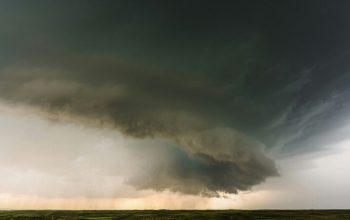Part 2 of 2
In last week’s Eagle, we heard from various teachers on how the online learning was set up and implemented during this unprecedented time of no classes for the rest of the school year. Now it’s time for Superintendent Toliver and the three building principals to share their thoughts on this situation.
Toliver stated that after school was cancelled, the administrative team met followed by meetings with the teaching staff. “We met with each building separately to keep to no more than 50 in a group,” said Toilver. “We gave the staff as much information as we had at the time, and answered any questions they had as best we could. At that time, we had very little information on guidance, we just knew that we were shutting down.”
Over the next week, they initially designed a system to deliver meals to students and decided how they were going to take care of the staff during the closure.
He admitted that ‘no one size fits all’ when dealing with kids and their education, and that is why they are using the voluntary approach versus a mandated education. “Internet access is the biggest issue, and it is not as easy fix,” stated the district’s head administrator. “One misconception is that if we put internet access on buses, and park them around town, all kids will have access. We can put hot spots around town, but access would still be limited to the power of the device each of them are using. Bus hot spots are designed for kids on a bus. We have placed internet hot spots outside the administration building, in the U at the high school and at the football field/track parking lot. We have also worked individually with students who are completing their college courses.”
Toliver stated that since they are designing this as they go, that they are constantly trying to evaluate what is working and what’s not. “Because our model is voluntary, we focused on students retaining information they have learned throughout the school year, not teaching them new skills,” he said. “We are also trying to provide resources to both parents and students, but that can be challenging because all students learn differently.” He also said the plan will look different come fall. “If the closure continues into the next school year, we would change our focus from retention to instruction,” said the superintendent. “However, instruction will be more difficult and require additional time and attention from teachers, parents and the students.”
Along that same line, he admits that no one can predict what the next school year will look like. “We’re in uncharted territory, but parents can be assured that no matter what happens we will do everything we can to provide a quality education to the students of our district,” said Toliver.
Patty Briggs stated that her staff at the elementary has been reaching out to their students through various technologies. “We’ve used Class Dojo, Google Classroom and Google Meet, and many of the teachers have class Facebook pages,” stated Briggs. “There’s also Messenger and emails. We are also posting information on the elementary webpage. This does not change everyday. In addition, packets of printed materials are delivered to all of our students.” She admits that their biggest challenge has been access. “Many of them do not have internet, or technologies to join sessions,” added Briggs. “The paper copies are one way for us to try to compensate for this.”
Along that line, they discussed what the expectations would be for sending materials home. Then teachers at each grade level reviewed standards to determine what was essential and developed the packets. “As the administrator, I worked with the teachers and associates to build a schedule for creating the packets,” said Briggs. “We couldn’t have everyone in the building at the same time. Then we consulted with transportation to develop a plan of delivering packets and Chromebooks to everyone. I worked with the staff to make sure everything was organized by bus routes and ready to be delivered.”
As a staff, Briggs said that they do not have the same abilities for using the technology, so teachers are participating in professional development to learn more about the platforms available. “Teachers meet regularly with students, and each other, to plan and learn more about the technology and how to use it effectively with our students,” she said. “We will continue to meet with students, provide contact information to assist them and parents as well as provide materials.” When it comes to some final advice for parents, Briggs chose to use something she wrote in the April newsletter.
“As parents, you were your child’s first teacher so some things come naturally,” wrote Briggs. “Teaching math, reading and science may not. So if it becomes too much, take a break and remember one of the most important things that your child needs to know is that they are loved. So snuggle up on the couch and read a book, play a game or go on a nature walk. As long as they feel safe and loved they will be fine.”
Scott Jeske at the middle school stated teachers in his building are also utilizing Google Classroom for lessons. “Each grade will be using an interdisciplinary unit that will have the five core areas, creating lessons that will be maintaining what they have already learned while extending their thinking,” said Jeske. “These lessons will be posted on Classroom, and students with internet will be getting an invitation via email that will give them access to the lessons. The school will be providing learning packets for students that do not have internet access.”
The breakdown by class shows lesson themes like this: Fifth Grade has a theme of ‘Westward Bound’, working on lessons that focus on the movement west of settlers and pioneers and the hardships they faced in settling the west; Sixth Grade has the theme ‘Earth Awareness’, with lesson focus on conserving the earth’s resources and protecting the environment in becoming globally aware citizens; Seventh Grade has a theme ‘American Revolution’, with lessons focused around that period in our nation’s history; Eighth Grade has the theme ‘Showcase’, with lessons that have them reflecting on their time in middle school and making plans for their future in high school and beyond.
“A schedule created for each grade will push out lessons from two curricular areas each day,” stated Jeske. “We feel that chunking the material will make it more manageable for the students, and we do not want to overwhelm them or their parents/guardians. Teachers will be able to offer feedback via Classroom and will also be able to utilize both email and Google to communicate with the students. The teachers have established ‘office hours’ at specific times when students can ask questions and get direct feedback from the teachers.”
He admits that trying to reach all students has been the biggest issue. “We have many of them that don’t have internet, and also some kids are taking care of siblings and do not have all the time they need,” he said. “Most importantly, it is just more difficult when you are not working with the students face to face.” Jeske feels fortunate as a principal that his teaching staff was already doing so much work online and students knew how to use Classroom. “Most all of them already use it, so it was a matter of putting everything together for the students,” he said. “We made the decision to do the interdisciplinary units to help tie things together. We are doing professional development to help teachers prepare online lessons that better meet students needs.”
Jeske explains that the most challenging part of this entire process is getting students to do the work so they are continuing their education. “It is harder to motivate students, and you can’t give them the direct feedback they need,” he said. “We have tried to create lessons that will keep students interested so they will finish well. Right now, students are looking for things to do so we have had 80-90 percent sign in to participate. Our goal will be to keep as many as we can working until the middle of May.”
His advice to parents is to not stress over this too much. “Teachers still are looking at their emails, so you can get ahold of them if you have questions,” said Jeske. “Use this opportunity to teach the kids things at home that we don’t get to work on here at school. This is a difficult time for everyone and the last thing we want to do is to stress parents out.”
Heidi Vasquez at the high school states that teachers there are working in cross-curricular teams to develop engaging and relevant lessons. “The lessons focus on skills and knowledge that extend beyond a specific course,” said Vasquez. “Lessons will continue to be released until mid-May.” She feels there are numerous challenges associated with online learning, and that there are many people, including teachers, who have issues with consistent internet access. “While some providers have offered to support students at this time, not every person has access,” she said. “Individuals living in rural areas often experience issues. Another issue can include the ability to meet the diverse needs of the students. All of our students learn in many different ways.”
She goes on to say that with limited instruction modalities, teachers are unable to meet everyone’s needs. “This is really heartbreaking for our staff,” said Vasquez. “We want to remove learning barriers for every student. With online learning, we are unable to do that.” She said the last issue has to do with everyone’s responsibilities at home. “When we went to school, we had seven hours a day of protected learning,” she said. “Many of our students and staff are responsible for additional duties at home, such as care of little children. It can be challenging for everyone if you are trying to take care of a baby while also participating in an online course.”
Vasquez feels the most important thing right now is to make sure everyone is healthy and feels safe. “Everything else comes after that,” she said. “The high school staff understands that our students often play a significant leadership role in their families, so we kept that in mind when developing the lessons. We focused on social-emotional learning and strengthening skills that our students already have. We also selected topics of interest that are relevant to the time or interesting topics we may not get to talk about in the classroom during the school year.”
Vasquez explains that the high school will provide opportunities for students to make up work missed before the school closed, at which point second semester grades will be calculated. Students should watch their school email for updates. “We encourage students to continue to read anything they enjoy throughout the spring and summer,” she said. “Students can also participate in the learning opportunities offered. These opportunities are voluntary, and will not influence their course grades.” Vasquez added that planning for fall is still in the works, and the high school will share more information as it becomes available.
She ends by offering tips for parents. “We understand these are challenging times,” said Vasquez. “Learning is not just reading, writing and math. It is also how to handle problems and stress. It’s also about helping other people out when you can. Learning is about family traditions and expectations. Parents, please use this time with your kids to continue to instill your family values. You can encourage your kids to participate in voluntary learning opportunities and read. Please reach out to us if you have any questions!”







